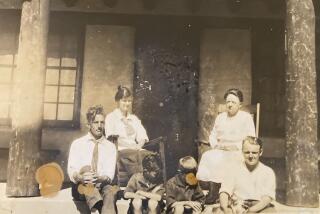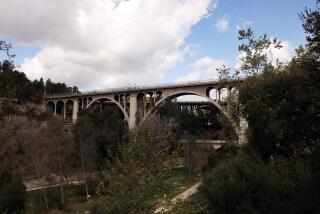A Town Built in Secrecy by Scientists
- Share via
It grew, secretly, from the desert to house the creators of the atomic bomb. But today--at least before fire ate hundreds of its homes--Los Alamos is a company town like any surrounding an automobile factory or a textile mill.
The founding fathers of Los Alamos--physicists from the University of California--arrived from Berkeley soon after the government selected the secluded and idyllic site 35 miles northwest of Santa Fe in 1942. Construction workers, who were not told why they were building, quickly erected barracks, a mess hall and the first laboratories. More scientists from around the country and their families would follow; by January 1943, the population had risen to 1,500.
Los Alamos--altitude 7,300 feet--was meant to be temporary. Once the top-secret mission of the Manhattan Project was achieved, everyone was suppose to drive down the hill and go home. But after Robert Oppenheimer and his team invented the world’s first atomic bomb in 1945, the laboratory and its town continued to grow.
Today, the streets of “The Town That Never Was” have names, and children no longer have to carry photo IDs. Los Alamos National Laboratory now covers 43 square miles of mesas and canyons and employs nearly 10,000 people, almost all of whom live in the 18,000-person town or neighboring White Rock.
As one of 28 Department of Energy laboratories in the United States, Los Alamos has expanded beyond nuclear science to other fields of national security research. It is still managed by the University of California.
Many of the makeshift barracks have been replaced by large, upscale homes, whose brick and clapboard siding and green lawns stand out--or stood out, in the case of those the fire destroyed--in a state known more for adobe, stucco and scrub.
At two small museums, tourists can learn about Los Alamos’ role in World War II and the Cold War, but more visitors pass through the town on their way to the Jemez Mountains and Bandelier National Monument, the park where the wildfire started.
More to Read
Sign up for Essential California
The most important California stories and recommendations in your inbox every morning.
You may occasionally receive promotional content from the Los Angeles Times.













